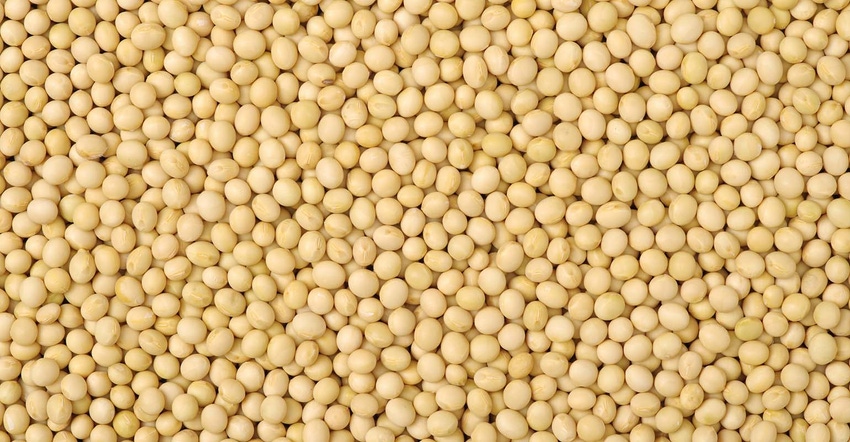
USDA’s Quarterly Grain Stocks report surprised markets today after finding 81 million more bushels of old crop (2020/21) soybean bushels. The finding bucked previous market forecasts, which were trading on the prospects of the second-tightest ending crop supply on record prior to the data release.
Larger than expected old crop corn stocks sent Chicago corn futures slightly lower in the aftermath of the report’s release. However, the higher soybean stocks added optimism to 2022 corn acreage expectations, sending deferred contract prices higher.
Continued downward revisions to the U.S. wheat crop sent futures prices in Chicago, Kansas City, and Minneapolis rallying up $0.12-$0.21/bushel immediately following the report.
“USDA made a score of balance sheet revisions today that necessitated changes all the way back to fall 2020 production estimates,” notes Farm Futures grain market analyst Jacquie Holland.
Corn stocks saw a 36% year-over-year decline, falling to 1.24 billion bushels through Sept. 1. That was higher than trade expectations, however, with an average trade guess of 1.155 billion bushels. Of the total, 842 million bushels are being stored off the farm (down 28% from last year), with 395 million bushels of on-farm storage (down 47% from last year). Disappearance moved from 3.08 billion bushels a year ago down to 2.87 billion bushels.
“Spring 2021 usage rates were higher than USDA indicated in its June 30 quarterly stocks update,” Holland says. “Today’s report saw USDA slash 2.7 million bushels of off-farm stocks, suggesting that rapid export paces last spring were likely more brisk than markets had originally factored. All told, stocks were not high enough to trigger a major selloff, thanks in large part to smaller beginning 2020 stocks.”
USDA also revised its 2020 acreage estimates, with 90.7 million planted acres and 82.3 million harvested acres and 6.71 million silage acres. Yield estimates slipped 0.6 bushels per acre lower, to 171.4 bpa.
Soybean stocks plummeted even further, dropping 51% year-over-year to land at 256 million bushels through Sept. 1. Analysts expected an even bigger reduction, with an average trade guess of 174 million bushels. On-farm storage fell 52% to 68.1 million bushels, while off-farm storage fell 51% to 188 million bushels. Disappearance between June and August was for 513 million bushels, which was 40% below the same period last year.
USDA-NASS revised 2020 soybean production 80.8 million bushels higher than its prior estimates. Planted area was revised to 83.4 million acres, with harvested area at 82.6 million acres. Yields moved 0.8 bushels per acre higher, to 51.0 bpa.
The 2020 soybean crop produced better yields than markets had originally forecasted based on updated usage data analyzed by USDA, Holland points out.
“Slower exporting and crush paces this past spring were re-factored into June 1 soybean stock estimates in today’s report,” she says. “USDA added 2.5 million bushels of soybeans to June 1 stocks, pointing to lower usage rates amid high prices and seasonal shifts in Chinese export demand to cheaper Brazilian stocks.”

Wheat storage fell 18% from a year ago, with 1.78 billion bushels through Sept. 1. That was moderately below the average trade guess of 1.852 billion bushels. On-farm storage tumbled 41% to 419 million bushels, while off-farm stocks only dropped 6%, to 1.36 billion bushels. Disappearance from the past three months totaled 711 million bushels, which was 2% higher year-over-year.
“USDA also added 1.4 million bushels to June 1 wheat stocks, suggesting slower than anticipated usage paces earlier this spring,” Holland adds.
USDA’s assessment for all-wheat production in 2021 was for 1.65 billion bushels. That’s 10% below 2020 totals of 1.83 billion bushels, although harvested area moved 1% higher to 37.2 million acres. Average yields were pegged at 44.3 bushels per acre – a 5.4 bpa drop from a year ago.
The agency’s breakdown of this season’s production included:
Winter wheat – 1.28 billion bushels (up 9%)
Spring wheat – 331 million bushels (down 44%)
Durum wheat – 37.3 million bushels (down 46%)
For a complete look at today’s reports, click here.
About the Author(s)
You May Also Like






